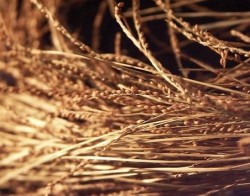 “Fonio is tasty, light, easy to digest and can be served with meat or poultry or vegetables,” says Diakité, who could be considered as the world’s principal champion of the cereal, which is eaten in a huge swathe of Africa, from Lake Chad – on the border between Chad and Nigeria – to Cape Verde, on the continent’s Atlantic coast. Furthermore, Diakité points out, a respected researcher, Dr Djibril Traoré, has recently proved some of the health benefits of fonio.
“Fonio is tasty, light, easy to digest and can be served with meat or poultry or vegetables,” says Diakité, who could be considered as the world’s principal champion of the cereal, which is eaten in a huge swathe of Africa, from Lake Chad – on the border between Chad and Nigeria – to Cape Verde, on the continent’s Atlantic coast. Furthermore, Diakité points out, a respected researcher, Dr Djibril Traoré, has recently proved some of the health benefits of fonio.
Professor Traoré, who is a scientific and technical counsellor at Senegal’s Institut de technologie alimentaire (Institute of Food Technology), carried out a series of experiments on mice, some of which had Type 2 diabetes. A sample group of the diabetes mice was fed fonio. “The most important result of the tests was that those fed with fonio were almost cured. [After the experiment] three out of 10 of the mice had completely normal livers. This is strong proof of the value of fonio.” Dr Traoré adds that eating fonio also helps prevent obesity, which is a step on the way to diabetes.
Diakité adds that Fonio Day is also promoting awareness of fonio. Originally proposed by Diakité himself several years ago, Fonio Day had its third annual celebration in July this year. The customary date – 27 July (the date on which Diakité’s first machine was manufactured in 1993 was changed in some areas so as not to conflict with Ramadan.
“Fonio Day is proposed now on the FAO [Food and Agriculture Organization of the United Nations] calendar,” Diakité says, stressing that, with food security widely predicted to be a major risk in the decades ahead, fonio is an ideal crop for West Africa – this hardy cereal can withstand drought and floods, grows in poor soil and needs no fertilizer and very little water.
 Voulue par un certain nombre d’états africains, la journée internationale du fonio existe depuis 2010 et est célébrée tous les ans en juillet.
Voulue par un certain nombre d’états africains, la journée internationale du fonio existe depuis 2010 et est célébrée tous les ans en juillet.